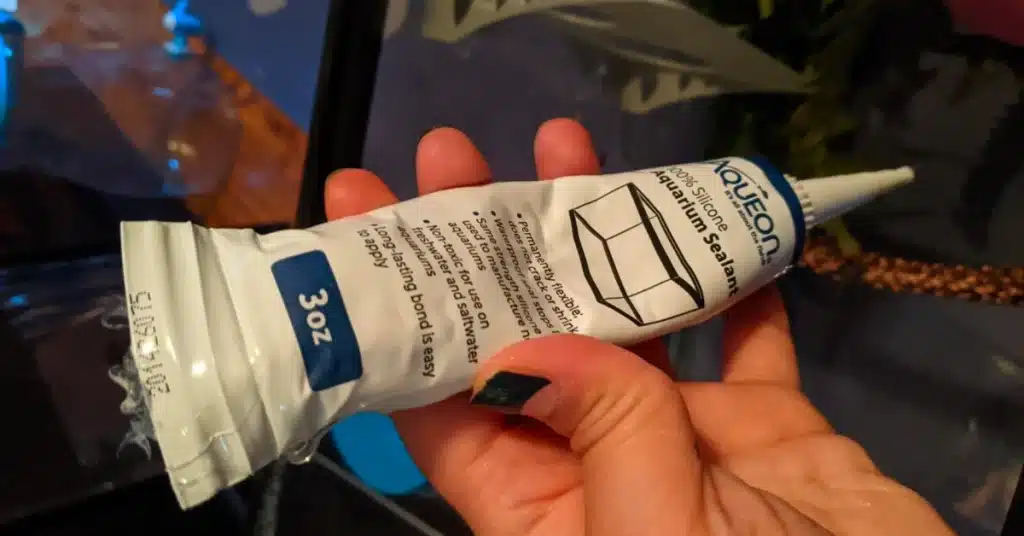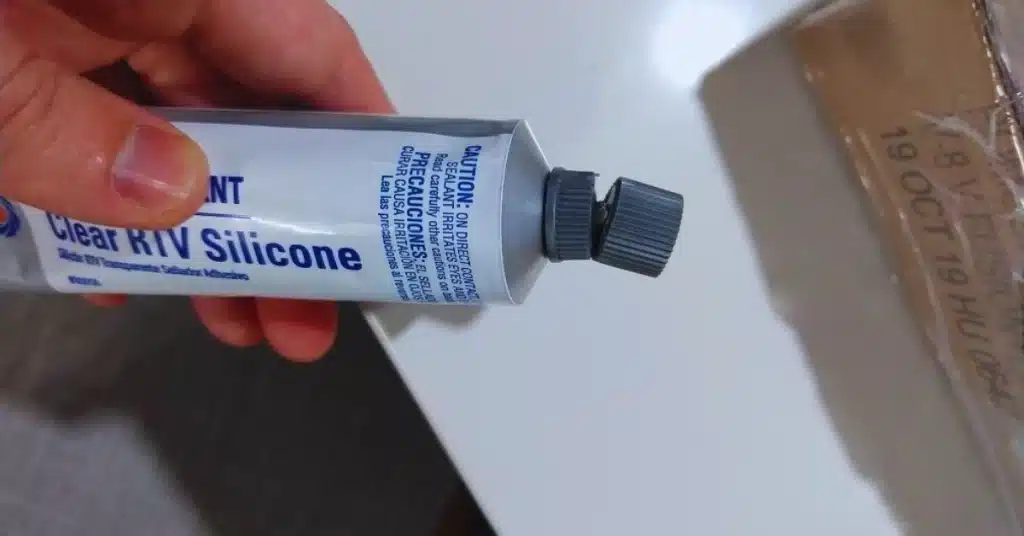At first glance, the contest of Silicone Sealant vs. Adhesive might seem like splitting hairs. After all, aren’t they basically the same thing? Well, not quite. These two substances perform very different roles while sharing a common ancestry in silicone polymers.
They each have their own strengths and weaknesses, and the trick is knowing which one to whip out when you’re in the middle of a project.
Read More: Silicone Adhesive vs. Silicone Caulk
Silicone Sealant vs. Adhesive
Silicone Sealants
In the world of construction and DIY, silicone sealants are the superheroes of sealing gaps and joints. They come into their element when you need to waterproof a joint, fill in a gap, or form a custom gasket.
If you look closely at the joints between tiles in your bathroom or the perimeter of the window panes in your house, you’ll probably see silicone sealant at work.

Their unique combination of durability, flexibility, and adhesion makes silicone sealants so versatile. They can bond to various materials, including glass, metal, and most plastics, and they remain flexible even after drying.
This means they can accommodate movement and deformation without breaking a sweat, an invaluable trait in building and construction projects where materials may expand or contract with changing temperatures.
Silicone sealants have several advantages over other adhesives, such as being more flexible and resistant to heat and cold. Silicone sealant is also used as undermount sink to granite adhesive.
Read More: Best Silicone Adhesive For Plastic
Silicone Adhesives
On the flip side of the silicone coin, we have silicone adhesives. These are the strong, silent types in the world of bonding materials. Their main role is to provide a high-strength, permanent bond between surfaces.
They are often used when a tough, unyielding bond is paramount, such as in electronics assembly, attaching automotive parts, or securing glass elements.
Unlike sealants, silicone adhesives aren’t designed to remain flexible after being cured. They’re there to create a bond that’s as tough as nails, and they need time to cure before they reach their full bonding strength; what they lack in flexibility, they more than make up for in sheer bonding power.

What Are The Differences Between Silicone Sealant And Adhesive
Silicone sealant and adhesive are two types of materials commonly used in various applications, from construction to automotive repairs. They serve different functions and have distinct properties that set them apart:
Function:
Silicone Sealant: As the name implies, silicone sealants are primarily used to seal or fill gaps, joints, or seams to prevent water, air, and even bugs from getting through. It is often used in bathrooms, kitchens, windows, and other areas where water resistance is necessary.
Silicone Adhesive: Silicone adhesives, on the other hand, are primarily used to bond or attach two surfaces together. They have strong bonding capabilities and are often used in various applications, including construction, automotive, and electronics.
Curing Process:
Silicone Sealant: Most silicone sealants cure by exposure to air. They must be applied in a well-ventilated area and require time to dry and harden.
Silicone Adhesive: Silicone adhesives often cure by exposure to heat. The heat initiates a reaction that causes the adhesive to bond to the surface and harden.
Flexibility:
Silicone Sealant: Silicone sealants are highly flexible even after they have hardened. This makes them ideal for use in areas exposed to movement or changing conditions (like temperature fluctuations), such as around windows or doors.
Silicone Adhesive: While some silicone adhesives retain a degree of flexibility after curing, they generally do not offer the same level of flexibility as sealants. They are meant to provide a strong, durable bond to withstand significant pressure.
Surface Compatibility:
Silicone Sealant: Silicone sealants can adhere to various surfaces, including glass, metal, plastic, and ceramic. However, their primary function is to seal gaps, not bond surfaces.
Silicone Adhesive: Silicone adhesives can also adhere to various surfaces. They are designed to bond surfaces together, making them stronger and more pressure-resistant.
It’s important to note that while the terms are often used interchangeably, silicone sealant and adhesive have different properties and uses. However, some products may serve dual purposes – they can seal gaps and bond surfaces together. Always check the product details to ensure they fit your needs.
Read More: Can Silicone Sealant Be Used As An Adhesive?
Chemical Properties of Each Product
While silicone sealants and adhesives share a common foundation in silicone polymers, they diverge in their additives and fillers. These give them their distinct properties and dictate how they behave once they’re out of their tubes and onto your project.
Sealants, for example, have a lower modulus, which means they’re more flexible and able to absorb and withstand a lot of movement and tension. Adhesives, on the other hand, contain more solid content, which gives them higher cohesive strength and rigidity.
This is why adhesives excel in applications where a robust, solid bond is required, while sealants shine in applications where flexibility and movement are the order of the day.
Why Both Silicone Sealants and Adhesives are Necessary?
It’s not about picking a side in the Silicone Sealant vs. Adhesive battle. It’s about understanding that each has its place and that choosing the right one can mean the difference between a job well done and a disappointing outcome.
When to Use Each Product?
Silicone sealants are your best friend when you need a flexible, waterproof, temperature-resistant solution. They’re perfect for jobs like sealing around windows and doors, caulking bathroom fixtures, or filling gaps in wall joints.
On the other hand, when you need a strong, durable, permanent bond between different materials, you’ll want to reach for a silicone adhesive.
This could be when you’re repairing a broken ceramic vase, securing components in an electronic device, or bonding metal parts in a car engine.
Can Silicone Sealant Be Used As An Adhesive?
The answer is not really.
While a silicone sealant will provide some adhesion, it’s not designed to form the kind of high-strength bond you would get from an adhesive.
Using a sealant as an adhesive could result in a weaker bond that might not withstand time or pressure. The bottom line? Use the right tool for the job!
Which is better, silicone or adhesive?
On the other hand, adhesives provide strong bonding properties and are best for permanently joining surfaces together. So, your choice should be based on whether you need to seal a gap or bond materials.
Read More: Gutter Sealant Vs. Silicone
Last Opinion
There’s no definitive winner regarding the face-off of Silicone Sealant vs. Adhesive. It all boils down to what you’re trying to achieve.
A silicone sealant is the way to go if you need flexibility and a durable seal. A silicone adhesive is your champion if you require a solid, enduring bond.
